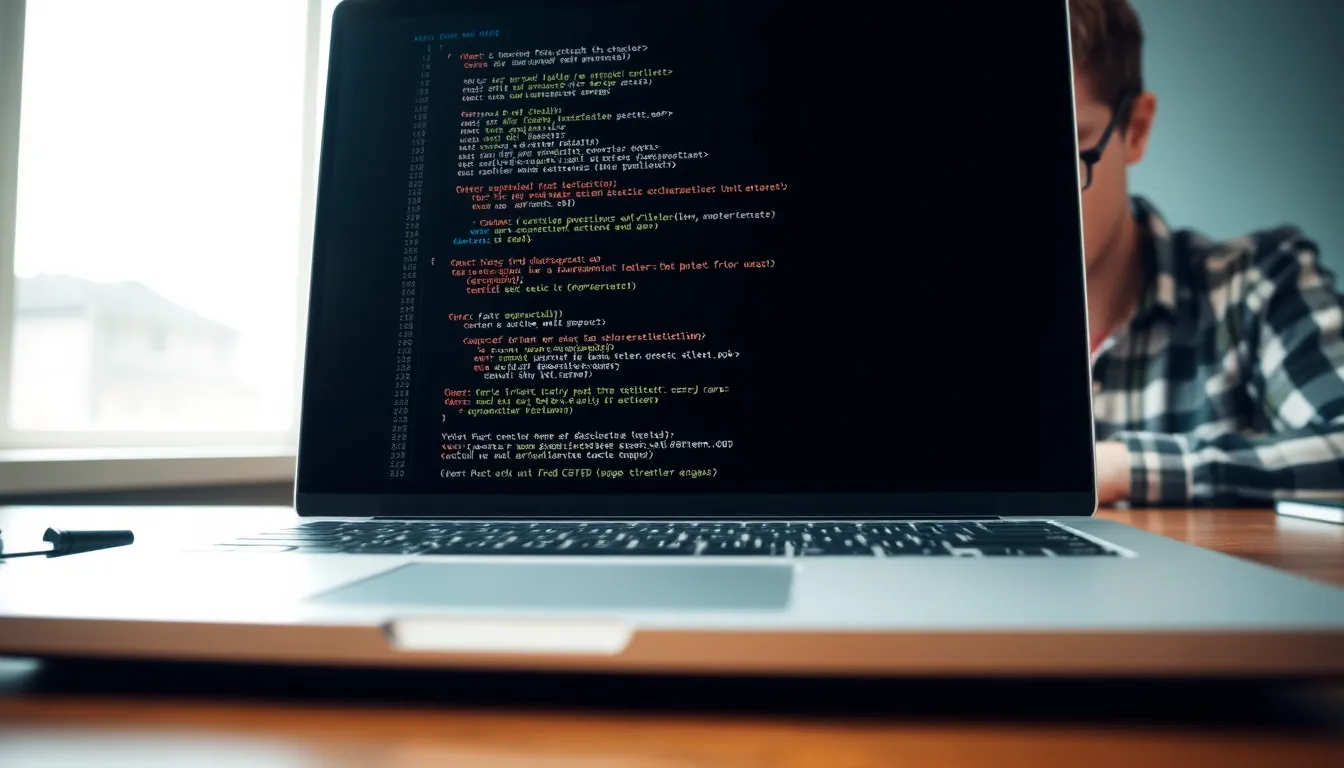Table of Contents
ToggleIn the world of coding, few things are as frustrating as a pesky bug ruining your day. If you’ve ever found yourself staring at the screen, wondering why your Python code just won’t cooperate, you’re not alone. Enter the mysterious realm of “llusyep”—a term that might sound like a spell from a wizarding school but is actually a common hiccup in Python programming.
Understanding Llusyep Python Fix Code
Llusyep represents a common but elusive issue that developers encounter when coding in Python. This challenge often manifests in unexpected bugs or errors that disrupt workflows.
What is Llusyep?
Llusyep refers to a specific type of bug that leads to perplexing behavior in Python applications. It occurs when the code runs as expected but produces unpredictable results. Developers often notice discrepancies in output or performance without clear explanations. Troubleshooting these issues can be time-consuming, resulting in frustration. Recognizing the signs of a llusyep error is essential for efficient debugging and smoother coding experiences. Tracking down the root cause often requires a systematic approach to problem-solving.
Importance of Fixing Code in Python
Fixing code in Python prevents small issues from escalating into larger problems. Developers can ensure software stability by addressing bugs promptly. Bugs can lead to application crashes, loss of data, or security vulnerabilities if left unresolved. A significant aspect of programming involves maintaining code quality, which reflects professionalism. High-quality code enhances user experiences and boosts satisfaction. Moreover, fixing issues swiftly can lead to reduced development time and costs, making it a priority for successful projects.
Common Issues with Llusyep Python Code

Llusyep errors often manifest as significant issues in Python code. Recognizing these typical problems helps streamline the debugging process.
Syntax Errors
Syntax errors occur when code violates the grammatical rules of Python. These mistakes prevent the program from running entirely. Common examples include missing colons, unclosed brackets, and incorrect indentations. It’s essential to check every line of the code, as even a small oversight can lead to a halt in execution. Utilizing an integrated development environment with syntax highlighting can quickly identify these errors. Fixing these issues typically involves carefully reviewing error messages that Python generates during execution.
Logical Errors
Logical errors produce incorrect results even when the code runs without syntax issues. These errors often arise from incorrect calculations or flawed algorithms. For instance, incorrect use of conditional statements might lead to unexpected outputs. Debugging such errors requires running the code with various inputs to identify where logic diverges from intended functionality. Incorporating print statements and using debugging tools can help track the flow of logic and isolate inaccuracies. Correcting these issues ensures the software behaves as expected and improves overall reliability.
Step-by-Step Guide to Fix Llusyep Python Code
Addressing llusyep errors involves systematic analysis and debugging. Following these steps can lead to more efficient fixes.
Analyzing Error Messages
Error messages provide critical insights into the nature of syntactical and logical issues. Reading them carefully can pinpoint the exact line where the error arises. Analyzing messages helps isolate the specific problem, allowing for clearer understanding. Error logs should be checked for additional context surrounding the bug. Knowing the type of error offers insights into what to fix next. Developers can search for error codes online to find similar user experiences and solutions.
Debugging Techniques
Utilizing effective debugging techniques is essential for resolving llusyep errors. Implementing print statements throughout the code allows for tracking variable states and flow. Starting with small test cases can help identify logical discrepancies. Employing debug tools found in IDEs provides step-through execution capabilities, making it easy to observe code behavior in real-time. Adjusting input values and observing outputs can also highlight flaws in logic. Testing incrementally helps ensure each component functions as expected before integrating it into a larger system.
Best Practices for Writing Llusyep Python Code
Writing clear Llusyep Python code enhances code quality and reduces debugging time. Implementing best practices aids in preventing common issues.
Code Organization
Organized code significantly improves readability and maintainability. Start by structuring code into functions and classes to encapsulate logic. Group related functions together, allowing for easier navigation and understanding. Moreover, consistent naming conventions for files, variables, and functions contribute to clarity. Indentation must follow the Python standard of four spaces to enhance visual organization. Documenting the code’s structure with a clear hierarchy helps future developers understand the flow. Refactoring code regularly promotes organization and optimizes performance.
Commenting and Documentation
Commenting plays a vital role in clarifying complex code sections. Use comments to explain the purpose of functions, parameters, and return values, making it easier for others to grasp the logic. Documentation should include setup instructions, usage examples, and FAQs within a dedicated README file. Maintaining up-to-date comments ensures that they accurately reflect code changes. Consistent formatting of comments helps establish a clear tone, aiding in navigation and comprehension. Simple, direct comments eliminate ambiguity and foster collaboration among team members.
Addressing llusyep errors is vital for maintaining the integrity of Python applications. By understanding the nuances of syntax and logical errors developers can significantly reduce debugging time and enhance code quality. Implementing best practices such as structured code organization and thorough documentation not only streamlines the debugging process but also fosters collaboration among team members.
With the right tools and techniques in place programmers can tackle these elusive bugs effectively, ensuring their projects run smoothly and efficiently. Prioritizing prompt fixes leads to a more stable software environment and ultimately a better user experience.





